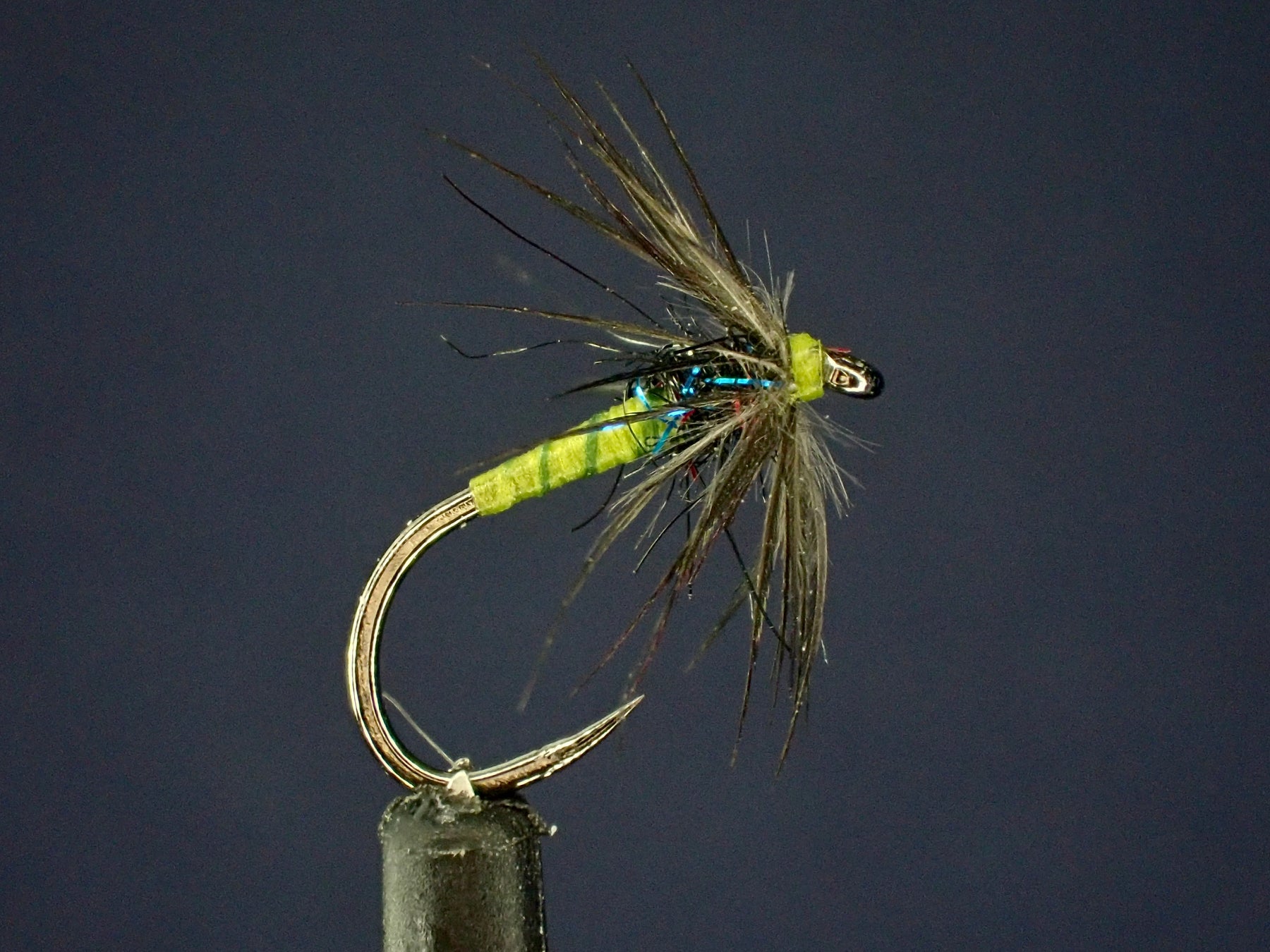
Exploring the Starling and Olive Soft Hackle Spider Fly Pattern
Fly fishing is a sport that combines artistry, technique, and tradition. We want to pay honor and tribute to one of the classic fly patterns that embodies all these elements and the Starling and Olive Soft Hackle Spider does just that. today in this blog post, we'll dive into the origins and roots of this timeless fly pattern, discuss the best times to fish it, explore various fishing techniques, and highlight the adaptability of this fly for different situations.
Origins and Roots
The Starling and Olive Soft Hackle Spider share a storied history with many other soft hackles that hark back to the roots of fly tying in the British Isles. Soft hackle flies, and the Spider Patterns have been used for centuries in the pursuit of trout and other freshwater species. The use of starling feathers in fly tying dates back to traditional English patterns, where the natural iridescence and softness of starling feathers made them a prime choice for imitating emerging insects.
Starling And Olive Soft Hackle Spider Tying Tutorial
Materials List:
- Hook: Moonlit Premium TOGATTA ML102 Sz14-20
- Thread: Semperfli Classic Waxed 12/0 Watery Olive
- Rib: Dark Green Olive Alcohol Marker
- Thorax: Snake River Fly Club Dub Firecracker Black
- Hackle: Starling Skin
Best Times to Fish the Starling and Olive Soft Hackle Spider
Early Spring: As the weather warms aquatic insects will become more active, and trout are eager to rise to the surface. This is an excellent time to fish the Starling and Olive Soft Hackle Spider, as it imitates emerging insects like Blue Wing Olives in smaller sizes and Caddis in larger sizes.
Throughout the Season: Soft hackle spiders are versatile and can be effective throughout the fishing season. Whether it's late spring, summer, or early fall, this pattern can mimic a variety of insects and trigger strikes from trout and other fish.
During Hatches: During insect hatches, trout become more selective in their feeding. The Starling and Olive Soft Hackle Spider, when fished properly, can closely resemble the emerging insects, making it a go-to fly for matching the hatch.
Fishing Techniques
Dead Drift: The classic method for fishing soft hackle spiders is to dead drift them on the surface. To achieve this simply cast upstream and let the fly drift naturally downstream. Use mending techniques to control the speed and depth of the drift, allowing the fly to imitate the movement of emerging insects.
Swing Technique: Another effective method, and most popular is the swing technique. Cast slightly upstream from your location at approximately about 45 degrees, then let the current swing the fly across the water's surface. This mimics the motion of a struggling insect, enticing strikes from hungry trout. At the end of the swing as the fly begins to rise to the surface fish become aggressive and strike with abandon.
Wet Fly Swing: This technique involves casting downstream and across, then retrieving the fly with a gentle lift and drop of the rod tip. This imparts a lifelike motion to the fly and can trigger aggressive strikes.
The Effectiveness and Tradition of Starling in Fly Tying
Starling feathers possess some very cool and unique qualities that make them indispensable in traditional fly tying. Pair that with the fact that they were and still are easily accessible you have a great material source. The iridescence, softness, and natural coloration of these feathers make them ideal for imitating a wide range of insects. They have been used in classic fly patterns for centuries and continue to be prized by modern fly tiers.
Adapting the Pattern
One of the fascinating aspects of the Starling and Olive Soft Hackle Spider is its adaptability. You can simply change the color of the body of the fly, you can create variations that match local insect patterns, or target specific species of fish. For example:
Experiment with different colored threads, wires, or beads for added versatility.
Conclusion
The Starling and Olive Soft Hackle Spider is a fly pattern that bridges the gap between tradition and innovation. With its rich history, versatility, and effectiveness, it has earned a permanent place in the fly boxes of anglers worldwide. Whether you're a seasoned fly fisher or just starting, tying and fishing this pattern is a rewarding experience that connects you to the time-honored traditions of the sport while allowing you to adapt and innovate to meet the unique challenges of your local waters. So, tie some Starling and Olive Soft Hackle Spiders, hit the water, and experience the magic of this timeless fly pattern.

Leave a comment